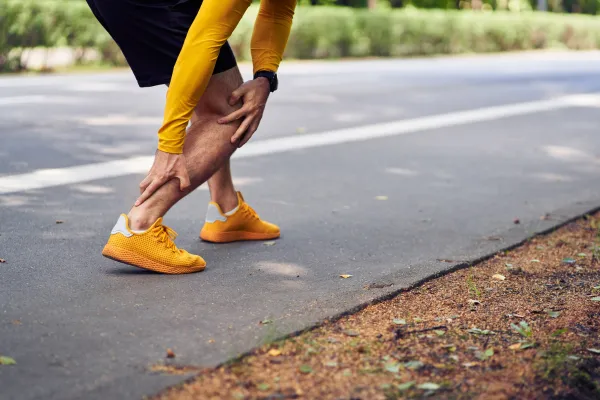Tips & Advice From Foot & Ankle Associates of Southern NH

The Connection Between Training Errors and Achilles Tendonitis: Avoiding Common Pitfalls
In today’s fast-paced world of fitness and sports, many enthusiasts push their limits in pursuit of performance gains. However, sometimes in our pursuit of excellence, we commit training errors that place undue stress on our bodies. One of the most common injuries among runners and active individuals is Achilles tendonitis. At Foot and Ankle Associates of Southern NH, we often see cases where minor training missteps escalate into chronic tendon issues. Understanding these errors is key to preventing injury and keeping you on track.
Understanding Achilles Tendonitis
Achilles tendonitis is an overuse injury that affects the Achilles tendon—the thick band of tissue connecting your calf muscles to your heel. Symptoms typically include pain, stiffness, and swelling, particularly during or after physical activity. While the condition can have several contributing factors, training errors often play a significant role.
Overuse, excessive strain, or improper technique can lead to micro-tears in the tendon, which over time may progress to full-blown tendonitis. The good news is that with a few strategic adjustments in your training routines, you can protect your Achilles tendon and reduce your risk of injury.
Common Training Errors That Contribute to Achilles Tendonitis
Overtraining and Inadequate Rest
One of the primary culprits behind Achilles tendonitis is overtraining without allowing enough time for recovery. When the tendon doesn’t have a chance to repair itself after strenuous activity, micro-injuries accumulate, leading to inflammation and pain. Incorporating adequate rest days and periodizing your training can help ensure your body recovers appropriately.Improper Warm-Up and Cool-Down Routines
Skipping a proper warm-up can leave your muscles and tendons stiff and unprepared for intense activity. A dynamic warm-up raises your body temperature and prepares your Achilles tendon for the impact ahead, while a cool-down with stretching helps reduce residual tension. Neglecting these steps can significantly increase the risk of injury.Sudden Increase in Training Intensity or Volume
Rapidly ramping up the mileage in your runs or increasing the intensity of your workouts can shock your Achilles tendon. Gradually increasing your training load over time allows your body to adapt, strengthening the tendon and reducing the risk of strain. Consistency and gradual progression are key to avoiding overuse injuries.Poor Running Form or Biomechanics
Even small deviations in running form can place additional stress on your Achilles tendon. Overpronation (excessive inward rolling of the foot) or an uneven stride can alter the way force is transmitted through your heel. Assessing your biomechanics—ideally with professional help—can pinpoint issues that may be contributing to chronic tendon stress.Inadequate Footwear
Shoes play a vital role in absorbing impact and distributing forces correctly as you run or train. Wearing worn-out shoes or those that lack proper cushioning can exacerbate the strain on your Achilles tendon. Investing in quality footwear that fits well and provides proper support can make a significant difference in both performance and injury prevention.
Strategies for Avoiding Training Errors
Plan Your Workouts Wisely
Design a balanced training schedule that incorporates hard workouts, easy runs, and rest days. This will help your body recover and reduce the risk of overuse injuries. Using tools like a training diary or an app to monitor your progress and recovery can be extremely beneficial.Prioritize a Proper Warm-Up and Cool-Down
Ensure each workout begins with a dynamic warm-up session that targets the calves and Achilles tendon. Finish with a cool-down that includes gentle stretching. Consistent use of these routines helps prepare your muscles and tendons for the workload ahead.Gradual Progression
If you're ramping up your activity, do so gradually. Whether you're increasing your running distance or the intensity of your strength training, allow your body the time it needs to adapt. Even a small percentage increase each week can help minimize the risk of injury.Regular Technique Assessments
Consider periodic evaluations of your form and biomechanics. A professional gait analysis or consultation with a foot specialist can pinpoint how your training might be affecting your tendons. With corrective measures, such as custom orthotics or targeted strengthening exercises, you can improve your form and reduce your risk.Invest in Quality Footwear
Replace your training shoes regularly to ensure they continue to provide proper support and cushioning. Quality footwear is essential, especially if you're engaging in high-impact activities that place significant stress on your feet and Achilles tendon.
Final Thoughts
Achilles tendonitis is a preventable condition when training errors are identified and addressed early. By making adjustments such as ensuring proper warm-ups and cool-downs, gradually increasing intensity, refining your biomechanics, and investing in supportive footwear, you can reduce the risk of developing this painful injury. At Foot and Ankle Associates of Southern NH, our team is dedicated to helping you keep your training effective and safe.
If you’re experiencing discomfort or want to learn more about protecting your feet while training, don't hesitate to reach out. Together, we can help you avoid common pitfalls and keep you moving forward.
Ask Foot & Ankle Associates of Southern NH And Their Team
Fill in the form to request a call from our team. One of our team members will call you for FREE and answer any questions or concerns you may have about your condition
Where To Find Foot & Ankle Associates of Southern NH

If you have any questions before scheduling an appointment or for general inquiries, please use the contact us button below. Our team will promptly reach out to assist you.
Opening Hours
Monday: 8:00am – 5:00pm
Tuesday: 8:00am – 5:00pm
Wednesday: 8:00am – 2:00pm
Thursday: 8:00am – 5:00pm
Friday: 8:00am – 2:00pm
Saturday: Closed
Sunday: Closed

